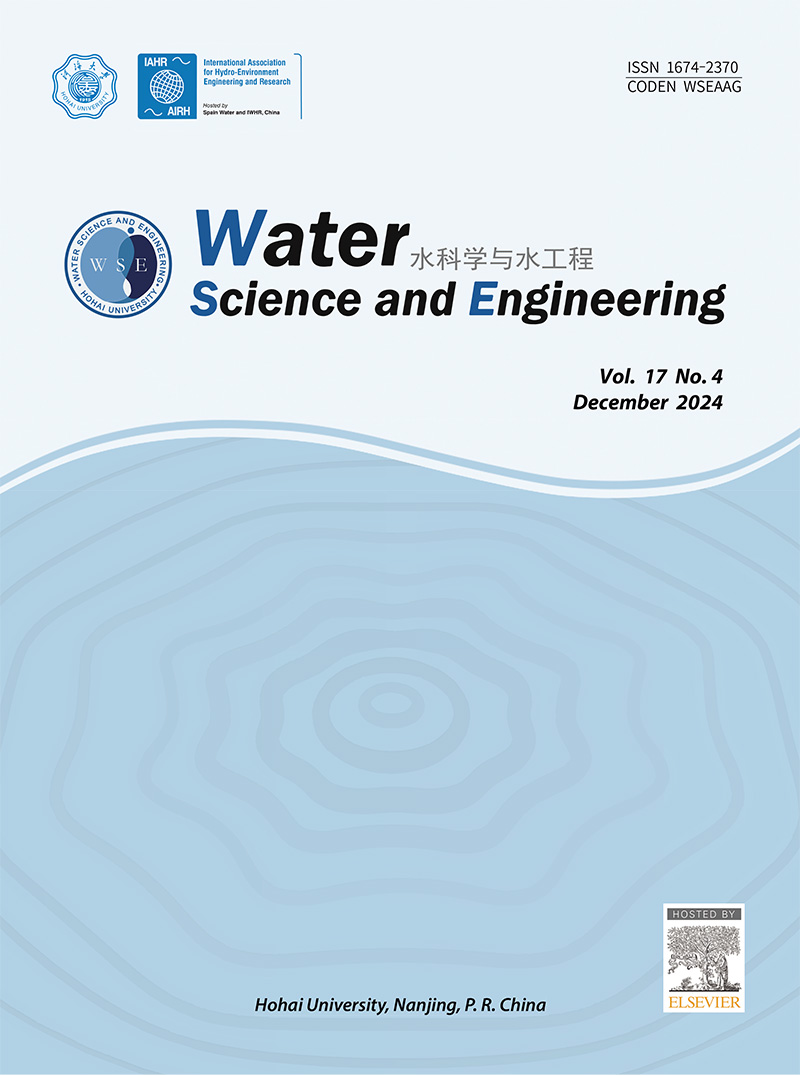用三维CFD模型评价组合斜顶堰流物理建模中的尺度效应
IF 4.3
Q1 WATER RESOURCES
引用次数: 0
摘要
对堰流尺度效应的研究有限,主要集中在单一类型堰的上游流量,如楔形堰、宽顶堰和尖顶堰(线性和非线性)。然而,这些单一类型堰的下游规模效应尚未得到深入的研究。本研究利用基于弗劳德相似度和三维计算流体动力学(CFD)建模的1:33.33比例的物理模型,研究了由ogee堰和尖顶堰组成的组合堰系统在上游和下游的流动规模效应。本研究中的尖顶堰由两个闸门代表,在洪水事件中保持关闭和淹没。实验数据证实,在不同的H/P (H为总水头,P为堰高)值上,组合堰系统的等效流量系数与尖顶堰系统的等效流量系数相似。然而,由于表面张力和粘度的影响,只有当H/P >;0.4, Re >;26959, We >;240 (Re和We分别为Reynolds和Weber数),条件是水深超过波峰0.042 m。此外,Re必须大于4 × 104,以最小化溢洪道通道和消力池(带挡流块)中水流粘度引起的尺度效应。限制标准与现有文献密切相关。该研究为今后在水利工程中的实际应用提供了有价值的见解。本文章由计算机程序翻译,如有差异,请以英文原文为准。
Evaluation of scale effects in physical modeling of combined ogee and sharp-crested weir flow using a 3D CFD model
Research on scale effects on flows over weirs has been conducted on a limited basis, primarily focusing on flows upstream of a single-type weir, such as ogee, broad-crested, and sharp-crested (linear and non-linear) weirs. However, the scale effects downstream of these single-type weirs have not been thoroughly investigated. This study examined the scale effects on flows over a combined weir system consisting of an ogee weir and a sharp-crested weir, both upstream and downstream, utilizing physical modeling at a 1:33.33 scale based on Froude similarity and three-dimensional (3D) computational fluid dynamics (CFD) modeling. The sharp-crested weir in this study was represented by two sluice gates that remain closed and submerged during flood events. The experimental data confirmed that the equivalent discharge coefficients of the combined weir system behaved similarly to those of a sharp-crested weir across various H/P (where H is the total head, and P is the weir height) values. However, scale effects on the discharge rating curve due to surface tension and viscosity could only be minimized when H/P > 0.4, Re > 26 959, and We > 240 (where Re and We are the Reynolds and Weber numbers, respectively), provided that the water depth exceeded 0.042 m above the crest. Additionally, Re greater than 4 × 104 was necessary to minimize scale effects caused by viscosity in flows in the spillway channel and stilling basin (with baffle blocks). The limiting criteria aligned closely with existing literature. This study offers valuable insights for practical applications in hydraulic engineering in the future.
求助全文
通过发布文献求助,成功后即可免费获取论文全文。
去求助
来源期刊

Water science and engineering
WATER RESOURCES-
CiteScore
6.60
自引率
5.00%
发文量
573
审稿时长
50 weeks
期刊介绍:
Water Science and Engineering journal is an international, peer-reviewed research publication covering new concepts, theories, methods, and techniques related to water issues. The journal aims to publish research that helps advance the theoretical and practical understanding of water resources, aquatic environment, aquatic ecology, and water engineering, with emphases placed on the innovation and applicability of science and technology in large-scale hydropower project construction, large river and lake regulation, inter-basin water transfer, hydroelectric energy development, ecological restoration, the development of new materials, and sustainable utilization of water resources.
 求助内容:
求助内容: 应助结果提醒方式:
应助结果提醒方式:


